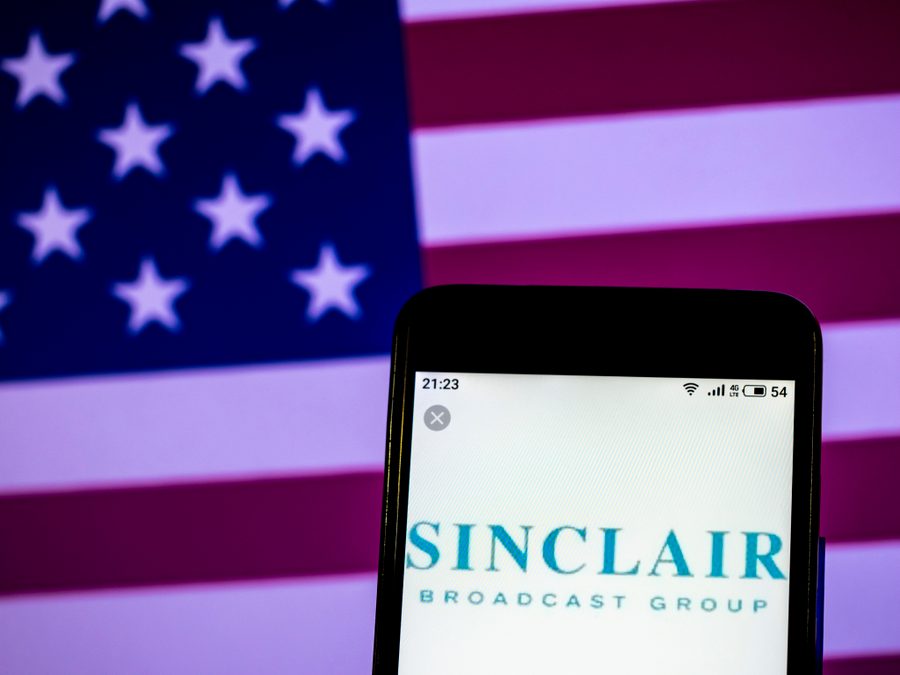How Media Consolidation Paved the Way for Right-Wing Insurrection
A battle playing out at the Supreme Court could make media monopolies way worse.
Hannah Sassaman

Like many others, I watched the riots unfold at the Capitol earlier this month with dread. I thought of how a root cause of the affront wasn’t being discussed: Big media conglomerates have decimated trustworthy local news that lifts the voices of systemically marginalized people. On January 19, the Supreme Court will consider an urgent case, Prometheus Radio Project v. Federal Communications Commission (FCC). At its heart is this question: Can the U.S. government permit far more consolidation of America’s media outlets while ignoring its mandate to ensure that America’s broadcast media system is diverse? The implications of the government’s decision have never been more dramatic or urgent.
The people radicalized to far-right insurrection did so in an echo chamber so total, both online and in broadcast and print media, that they couldn’t hear contrasting opinions. Today, the Supreme Court will hear arguments to help it decide if that echo chamber will become even more impenetrable, and drown out the voices of America’s rising majority: women and people of color. The FCC will argue that it has the right as an agency to let ownership consolidate further, while lawyers for myriad community organizations, including mine, will say that the FCC absolutely cannot do that without demonstrating that more consolidation won’t drown out diverse voices. (Disclosure: I work for Movement Alliance Project and formerly worked for Prometheus Radio Project, both parties to the Supreme Court case.)
How did that chamber get built? It started with media consolidation, the process by which big media companies purchase local broadcast outlets in markets nationwide, pushing out competitors and standardizing the content that we rely on for our news and information. When Congress passed the Telecommunications Act of 1996, it opened a floodgate for mostly locally-owned media to disappear into national conglomerates, starting the spiral away from truly local local news, and reducing the number of Black, other racial minority, and women-owned print and television outlets. Companies like Sinclair Broadcasting—which requires local stations to run nationally-produced news segments that, for example, routinely equate all Muslims with terrorism—were able to purchase hundreds of stations, and form operating agreements with so many others that they now reach 40% of American households.
While the internet is a major source of information for much of America, broadcast and print remain the fundament of our political and economic perspectives — both with older people and rural community members where Trump built much of his base, and in lower income communities of color. The internet isn’t covering City Hall or the school board: A Duke study showed that in medium-sized communities, only 10% of local news stories originated from online-only outlets. Local broadcasters are a key source of journalism, but with a single perspective, as they are owned by a handful of companies — the vast majority white and male. And in some markets, one company controls two or three news outlets, producing the same stories on multiple channels.
After Congress revised telecom law to let companies buy each other up in local markets, Black, Brown and female ownership of stations plummeted. The FCC was ordered in the 1996 Telecommunications Act to review every four years how media ownership consolidation was impacting diversity of ownership for communities of color and women. In the case under review in the Supreme Court, the FCC looked at those ownership numbers and shockingly concluded that the drastic decline of diversity in media ownership just did not matter, and the FCC should be allowed to consolidate media ownership. This included letting one company own newspaper and broadcast outlet in the same market, something previously restricted in order to protect local diversity of voices. .
This is not the first time the FCC has turned in shoddy work showing no consideration for how consolidation was impacting the number of voices in a market, including Black, Brown and women’s voices. This is the fourth time the Third Circuit Court of Appeals directed the FCC to explain the logic behind its decision to permit consolidation while totally ignoring diversity. The question is as relevant now as it was then: Under today’s consolidation, two thirds of Black people feel underrepresented in the media, and Black journalists are few and disrespected in their newsrooms. According to the FCC’s data, compiled by The Leadership Conference on Civil and Human RIghts, only 5.3% of TV stations nationwide were owned by women in 2017, while almost 51% of American residents are women. Black station ownership dropped from 1% to 0.9% from 2009 to 2017, a year when the Black population was almost 14%.
This year proved just how much consolidation hurts us. Sinclair promoted Covid-19 denialists and even partnered with the filmmakers of the conspiracy theory film Plandemic to spread deadly misinformation. As cities rose up to demand the reallocation of municipal budgets from overfunded police departments to the community investments that truly keep us safe, cities lacking robust local journalism couldn’t even talk about what defunding the police really means and left communities out of the discussion. Instead, consolidated broadcasters kept promoting “if it bleeds, it leads” coverage, perpetuating racist stereotypes about people and families of color.
As an organizer for tech and media justice, I have supported brilliant nonprofit local media outlets nationwide. From Florida farmworkers using community radio to organize for just pay in the tomato fields, to communities in Opelousas, Louisiana preserving Zydeco culture on the air, to neighborhood news at PhillyCAM, I have seen what media in the hands of Black and Brown communities does to both a homogenized news system, and to power.
Local stations owned, operated and dedicated to their communities lift up perspectives that then challenge the rest of the ecosystem to transform coverage of communities long misrepresented in the news. The stories they create, the journalists they develop, and the audiences they support then have more power in how other stories are told. They are visible to their governments and gain power to win more just futures.
The Supreme Court should remember that surrendering our public square to a few corporations brought us exactly to this moment. Preserving and expanding diversity of media ownership is absolutely necessary to get us out.
Hannah Sassaman is the policy director at Movement Alliance Project, and a former organizer with Prometheus Radio Project, both based in Philadelphia, Pennsylvania. Both organizations are parties to the Supreme Court case, Prometheus vs. the FCC.





